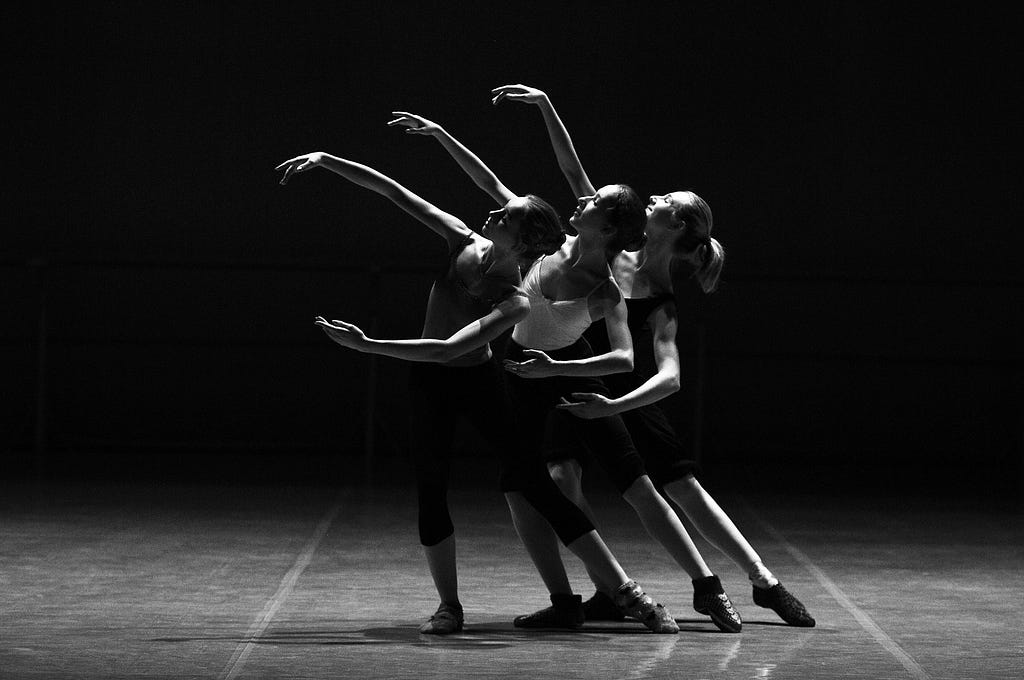Latest news about Bitcoin and all cryptocurrencies. Your daily crypto news habit.
 This article was first published on The World As A Stage.When was the last time you left a meeting frustrated?
This article was first published on The World As A Stage.When was the last time you left a meeting frustrated?
My last time was every meeting. We are all working together on the same project, but it’s always the same :
- he can’t stop talking- she always criticizes the new ideas and about minute details before we can even start building on it- he brings topics that had nothing to do with the initial agenda- she can’t stop cracking stupid jokes- he doesn’t understand the big picture- she is obsessed with her pointless ideas- etc.
Meetings are improvised group collaboration: the participants don’t exactly know how they will contribute, and their reactions depend on others’ behaviors.
We improvise collaboration with others all the time. In our relationship, in a store, at associations, with our family, etc. We take it for granted, we don’t need to learn how to interact with others. After all, this is the activity that we dedicate the most time to. By now, we should be experts!
I think that improvised group collaboration is one of the most difficult human activity.
Instead of considering myself as an expert, I now try to stay humble and demanding.
Humble because, as most people, I’ve never really worked on collaboration except in day to day interactions. So, as for any activity I have to be humble and eager to learn how to be better at it.
Demanding because it’s possible to improve it and make a group collaborate in a much more efficient way than the sum of its parts.
When a group shines
The last time I’ve seen a group work together so effectively you couldn’t believe it was not scripted was in the improvised musical show of The Showstoppers.
In this video you can hardly notice any mistake. But the Showstoppers are no different, they have the same problems we have in our meetings : unplanned and strange ideas, people insisting too much on what they have in mind, misunderstandings on what the story is about, etc. Their difference is that they trained to make their collaboration flow.
Improv is a mission-driven, goal-directed team activity where each participant is, at various times, both a leader and a follower. — Izzy Gesell
The modern Improvisational theater is not new anymore, it has been first popularised by Viola Spolin’s and Keith Johnstone’s books, and now thousands of people are practicing it. Its techniques are used today outside of theater at the heart of innovation at MIT and at companies like Google, Facebook or Apple. Even scientific studies begin to show the effectiveness of these tools on collaboration.
What can we learn from improvisation?The techniques of the theater are the techniques of communicating — Viola Spolin in “Improvisation for the theater.”
As long as your work (or life) involves communicating with another human being, there are theater techniques and games to improve it.
Listening and Building
Each time I am the first to go on stage in an improvised play, I’m scared. When you start your scene, not knowing where the story is going, not knowing if your teammates and the audience will react positively to your offer, you only wish for one thing: to never have gotten on the stage in the first place.
Any person proposing something to a team is the same, the idea is still new and needs protection. Improvisers have created the mantra “yes, and” to protect (saying “yes”) and build on these new ideas (“and”). The “yes, and” is not just about being nice to a proposition out of kindness. It’s about being the best follower that has ever existed, to make everything you can to make that idea work, to make your partner look beautiful. So, if it fails, it won’t be the mistake of anyone, it will be the learning for everyone.
Whether it’s the kernel of a movie idea or a fledgling internship program, the new needs protection. Business-as-usual does not. Managers do not need to work hard to protect established ideas or ways of doing business. The system is tilted to favor the incumbent. The challenger needs support to find its footing. And protection of the new-of the future, not the past must be a conscious effort. — Ed. Catmull in “Creativity, Inc.: Overcoming the Unseen Forces That Stand in the Way of True Inspiration.”
Trust
I was at the 2018 Applied Improvisation Network Conference in Paris. As we were discussing how to enable a group to be better at problem-solving, a theater director shared his surprise :
In theater it can take years of work for building trust in a group before we even start to solve problems.
A hard part of an improviser’s work is to build trust in a group. And this is firmly connected to how the group reacts to mistakes. Education systems everywhere in the world are formed by the same idea of giving feedback when we are wrong. Most of us have grown up in a culture where we felt ashamed to make mistakes. Instead, improvisers learn to embrace them.
Embracing mistakes is not only being ok with each error. It is also making mistakes as part of the learning process. Improvisers learn to have a positive reaction to errors, to make fun of them, to even build on them.
One night I was operating lights for the show Theatersports. It was my first time in the booth and I was taking everything very seriously, making sure I knew the correct sequences and controls. I was terrified of making a mistake, destroying the show and letting everyone down. Keith came into the lighting booth, casually looking around, asking, “Is this your first time doing lights?”“Yes.” I replied “Ah”, he said. “You need to make at least 3 mistakes or you haven’t done your job.Then he left the booth.For the whole show I was looking for any opportunity to take risks so that I could make my quota of mistakes. At the end of the show he said, “Patti, you made 2 mistakes try again next time.”Keith used the logic of success to get me to make mistakes. He relieved me of the stress of fear of failure by giving me permission to make mistakes. He created an environment where I could take risk and learn. — Patti Stiles in “The art of making mistakes.”
Freedom and Constraints
When I ask friends to describe how they see improvisation they always tell me that ”it’s the liberating activity of doing whatever you want on stage and make fun of it.” If this were true, the Showstoppers’ show would be a mess.
When you go to an improv show, they may ask you for a suggestion, describe the ground rules, ask you to define some precise elements of the drama (the place, the characters jobs, their secret desires, etc.). It’s because improvisers also know that creation and collaboration are only possible under constraints. In a business environment, maintaining the equilibrium between freedom and constraints is difficult but indispensable.
“The temptation to lead as a chess master, controlling each move of the organization, must give way to an approach as a gardener, enabling rather than directing. A gardening approach to leadership is anything but passive. The leader acts as an “Eyes-On, Hands-Off” enabler who creates and maintains an ecosystem in which the organization operates.” — Stanley McChrystal from the U.S. Forces Afghanistan in “Team of Teams: New Rules of Engagement for a Complex World”
Storytelling
The importance of storytelling in organisations is not a new idea. A lot of books have explored how to build a compelling story. Even some events like TED talks have mastered the formula to the point that it’s always efficient… but tend to be predictible as we all now see the recurring pattern.
Storytelling is much more than telling a personal anecdote in the middle of a red circle. Improvisers work on building the unique story that this group, this audience, at this moment needs instead of following scripted tools.
A brand is the set of expectations, memories, stories, and relationship that, taken together, account for a customer’s decision to choose one product or service over another — Seth Godin
What comes next?
Learning with the tools of Improvisational theater is a journey. There is no shortcut because it’s about being more self-aware of your habits and your surrounding. And then, you can decide, by yourself, the kind of person you want to be with others.
You can check The World As A Stage to learn more on how to use improvisation in your teams.
You are not yet convinced and want more examples
Check out the book Applied Improvisation: Leading, Collaborating, and creating beyond the theater for more examples of the application of theater techniques outside of the theater and their outstanding results.
You are convinced, and you want to start using these tools
My best advice is to find some improv training or workshops near your home to discover the process of improv training. If you prefer to read, you can check out the book Training to imagine to get a guided help on how to start applying improvisation in your organisation.
Too long, didn’t read! Just watched the Showstoppers video, they are fantastic!
This other video is for you. Here is an example of the kind of improv training that makes the Showstoppers so amazing.
Team collaboration is hard, Improvisation training can help was originally published in Hacker Noon on Medium, where people are continuing the conversation by highlighting and responding to this story.
Disclaimer
The views and opinions expressed in this article are solely those of the authors and do not reflect the views of Bitcoin Insider. Every investment and trading move involves risk - this is especially true for cryptocurrencies given their volatility. We strongly advise our readers to conduct their own research when making a decision.

